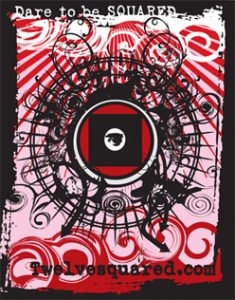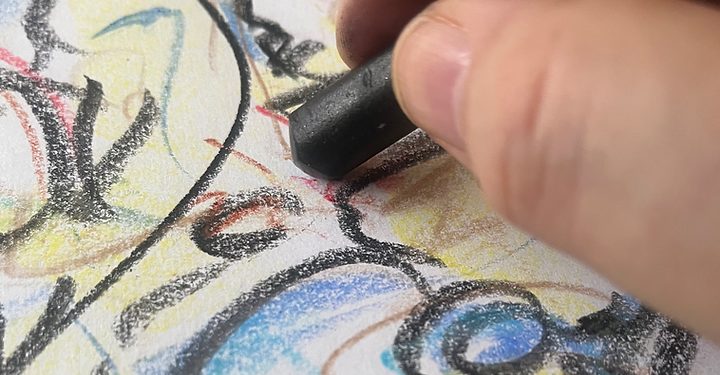I’d like to share my story of my love of crayons and how Crayonuary started. So, what is Crayonuary®? Before I get to the nitty-gritty, I’d like to tell you the story of how I started crayon journaling.
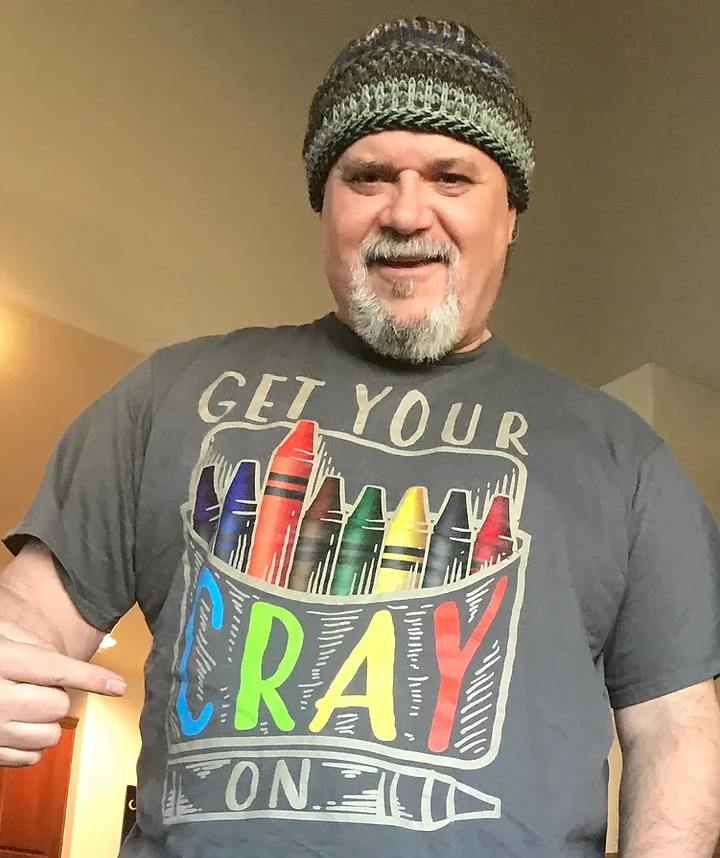
Like most people, I was introduced to crayons as a toddler. I have happy memories of my mom giving me a blank piece of paper and a box of crayons and telling me to draw; nothing specific – just draw. I remember the sense of freedom it gave me! All those colors, no parameters, and infinite possibilities. I would dive headlong into drawing. I spent hours just drawing and drawing. As an adult, I wanted to bring those feelings back into my life. Having four kids, we have lots of crayons in the house! I started drawing with the kids’ crayons and I found it to be profoundly therapeutic.
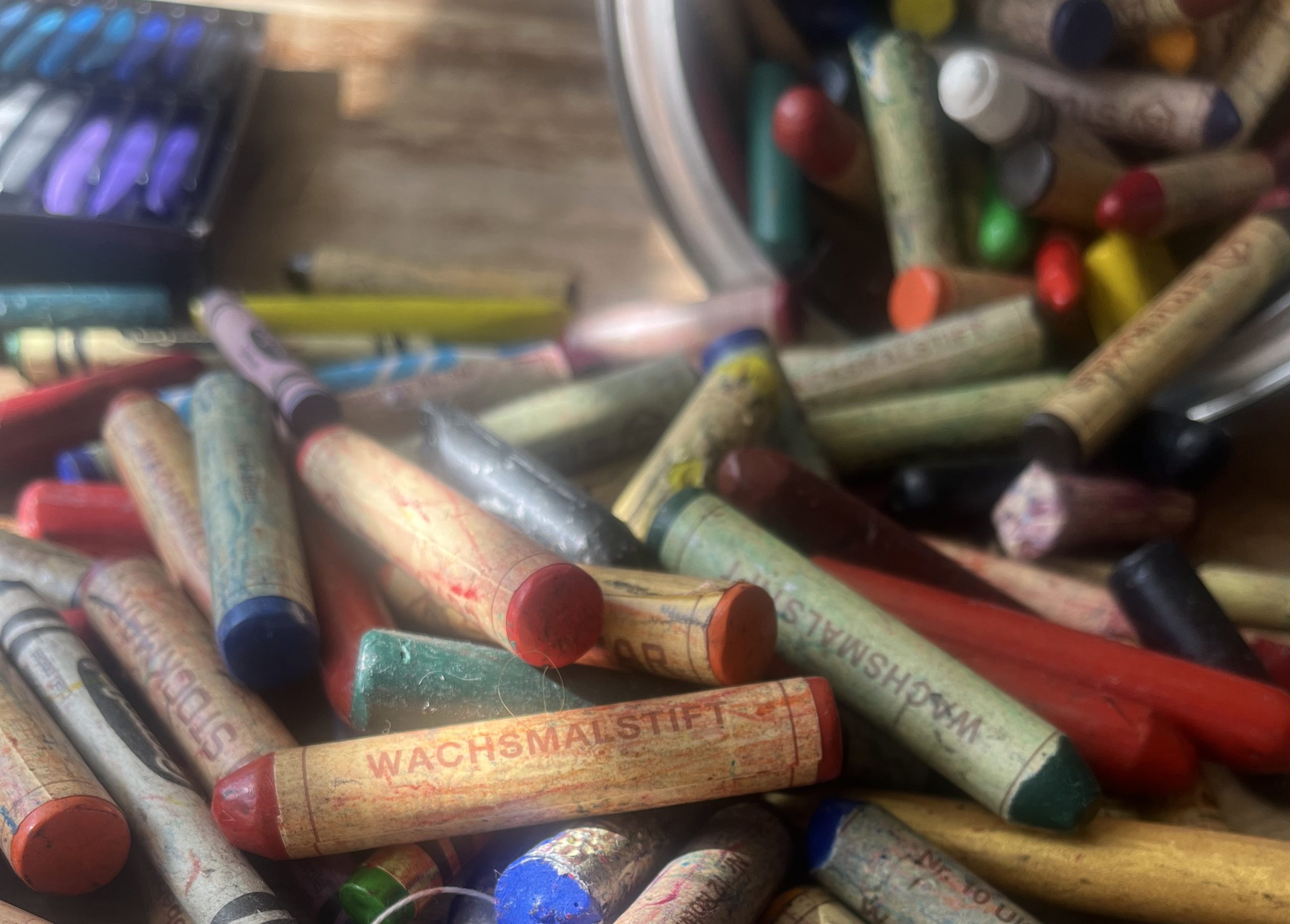
Linda, my uber-talented wife, has given our kids all kinds of crayons over the years – bee’s wax crayons, rock crayons, block crayons, fat crayons, triangle crayons, stick crayons, and of course that infamous box of 64. They’ve also made crayons! I became obsessed with all these different types of crayons. Each type of crayon gave me a different effect. I loved the variety they produced in my drawings. Though my all time favorite crayons are my father’s carpentry marker crayons from the Binney & Smith company. Binney & Smith became Crayola in 1936, which would make these crayons over 75 years old!
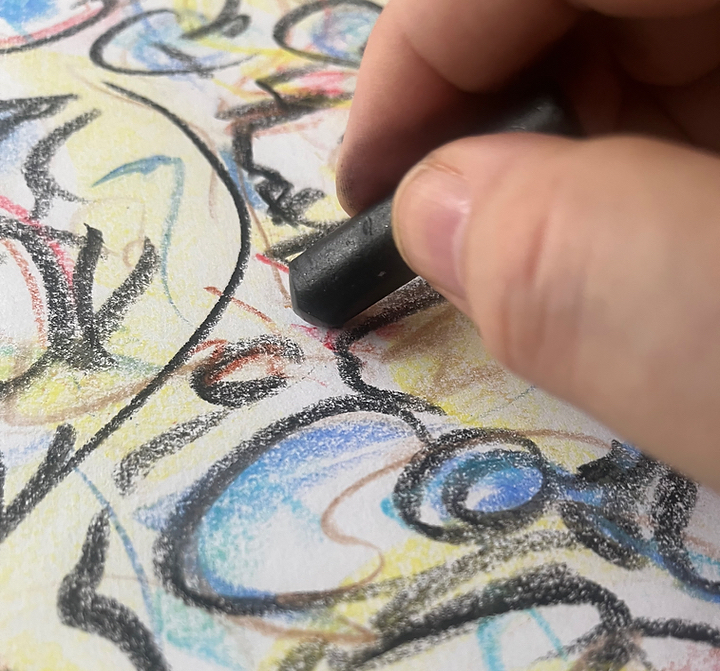
My foray into crayon journaling started in earnest in 2017. I was putting together an art talk/workshop on how art can be used to raise your awareness and tap into a higher consciousness. Researching this topic reminded me of a technique I studied throughly over 20 years ago – automatic drawing. Automatic drawing is an art technique that was developed by the surrealists as a means of expressing the subconscious.
In automatic drawing, the hand moves “randomly” across the paper. In allowing chance and accident to mark-making, drawing to a large extent is freed of rational control. Hence, the drawing produced is attributed in part to the subconscious mind and reveals something of the psyche, which may otherwise be repressed. Many notable artists have used this technique throughout art history: Jackson Pollock, Willem de Kooning, Arshille Gorky, Cy Twombly, Jean-Paul Riopelle, and Roberto Matta. Just to name a few.
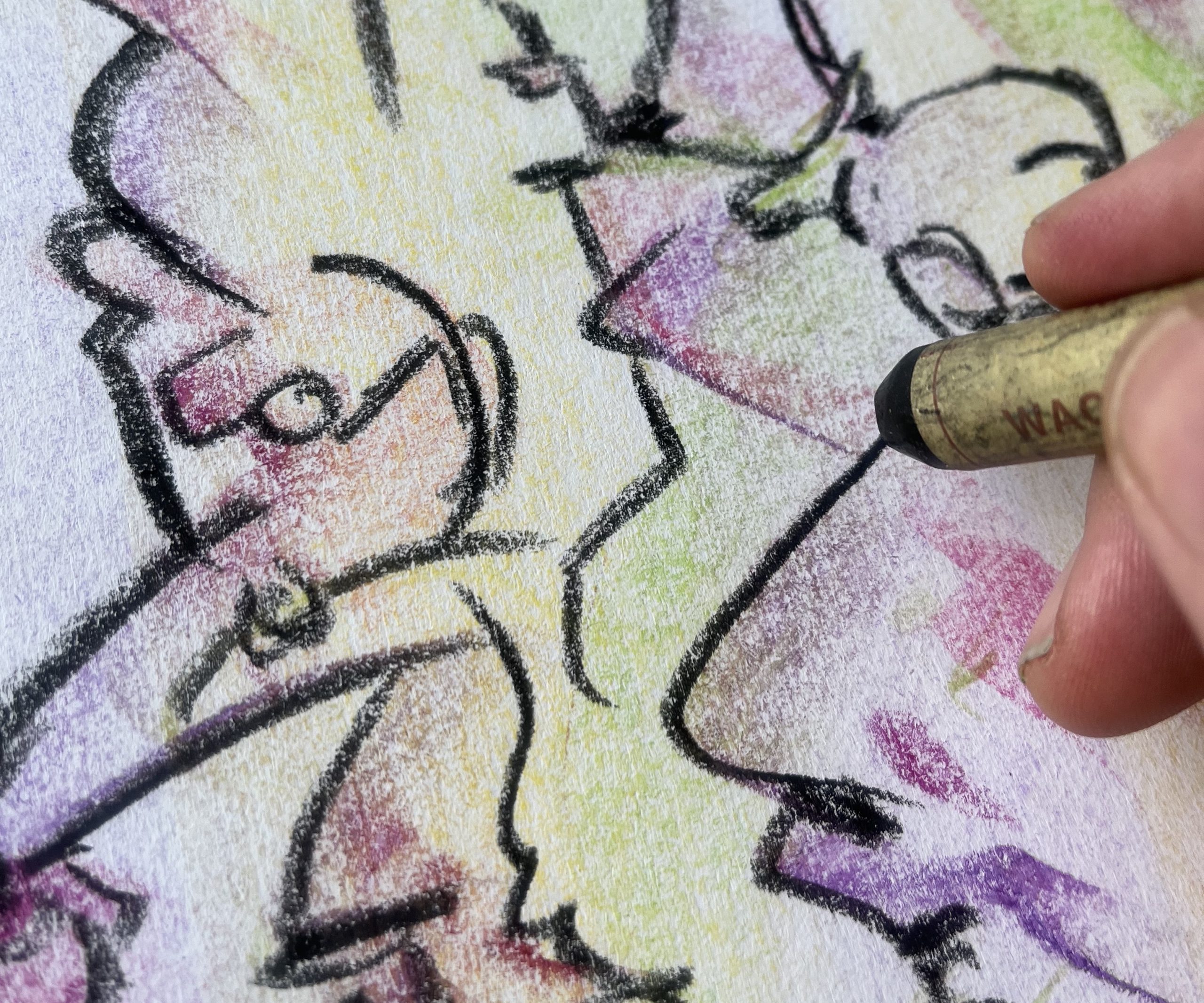
Getting back to my first workshop, I ended my talk by saying that drawing, even just a few minutes a day, can start to create a bridge to the higher self. After the workshop, I realized that I wasn’t taking my own advice. I myself wasn’t currently doing this practice. If I was going to suggest it to others, I better start doing it myself. I made a commitment to draw every day for the next thirty days. I chose crayons because they were comfortable and familiar. They helped me get my “inner thoughts” down on paper quickly. Those thirty days came and went and I just kept going. My quick sketches turned into more complex drawings and then full-on complete works of art. I loved the practice so much and I wanted to share it with others. My own reconnection with crayons and my daily drawing practice birthed the Crayonuary® 30-Day Challenge!
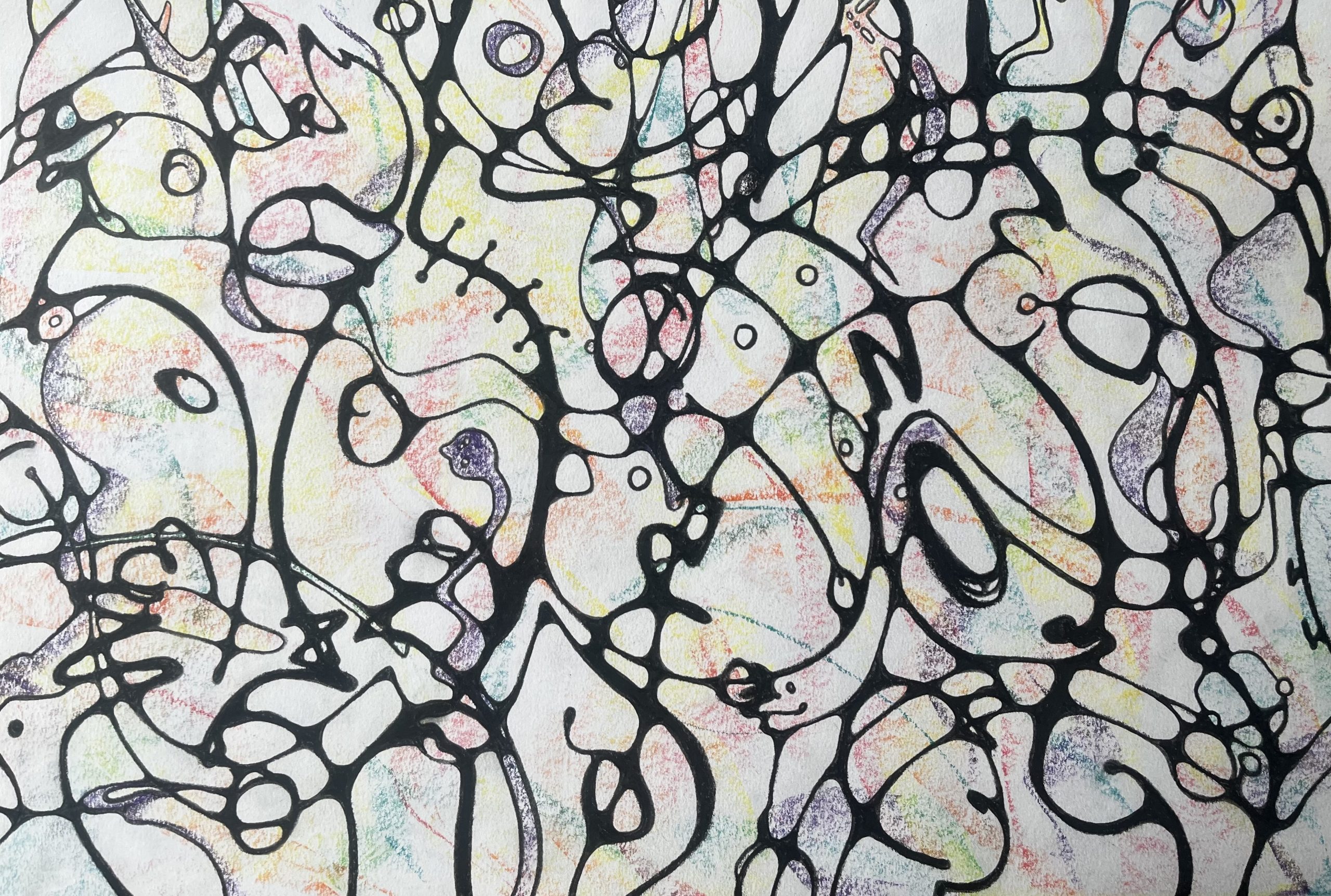
Most recently, I have been experimenting with neurographics. A drawing technique that combines art and psychology to facilitate self-expression, emotional healing, and personal growth. It’s very similar to my crayon journaling in that it involves the use of simple lines and shapes to create intricate and interconnected patterns that reflect thoughts, emotions, and inner dialogue. It is a very powerful technique with a lot of science behind it. Linda wrote a blog post about it and also created a free tutorial.

Are you ready to get cray cray? Grab your crayons and join us! The Crayonuary® 30-day crayon journaling challenge starts February 1st. I’ve led this challenge for the last five years and this year, I’ve teamed up to create some goodies to promote the challenge through LINDA CHIDO ART and crayon manufacturers’ Filana Crayons out of Colorodo, Stockmar Crayons out of Germany, and Caran d’ Ache out of France.
What is LINDA CHIDO ART? It’s our families unified web presence. this is where our family’s deep-rooted passion for art comes to life. A virtual space where you can encounter captivating artworks but also tap into a rich well of art knowledge cultivated over decades of dedicated practice and education.
The purpose of the Crayonuary challenge is for you to experience for yourself the benefits of the simple act of drawing with crayons, every day for thirty days. We use crayons because they help to remove barriers that other art tools may present. Plus, crayons are fun!
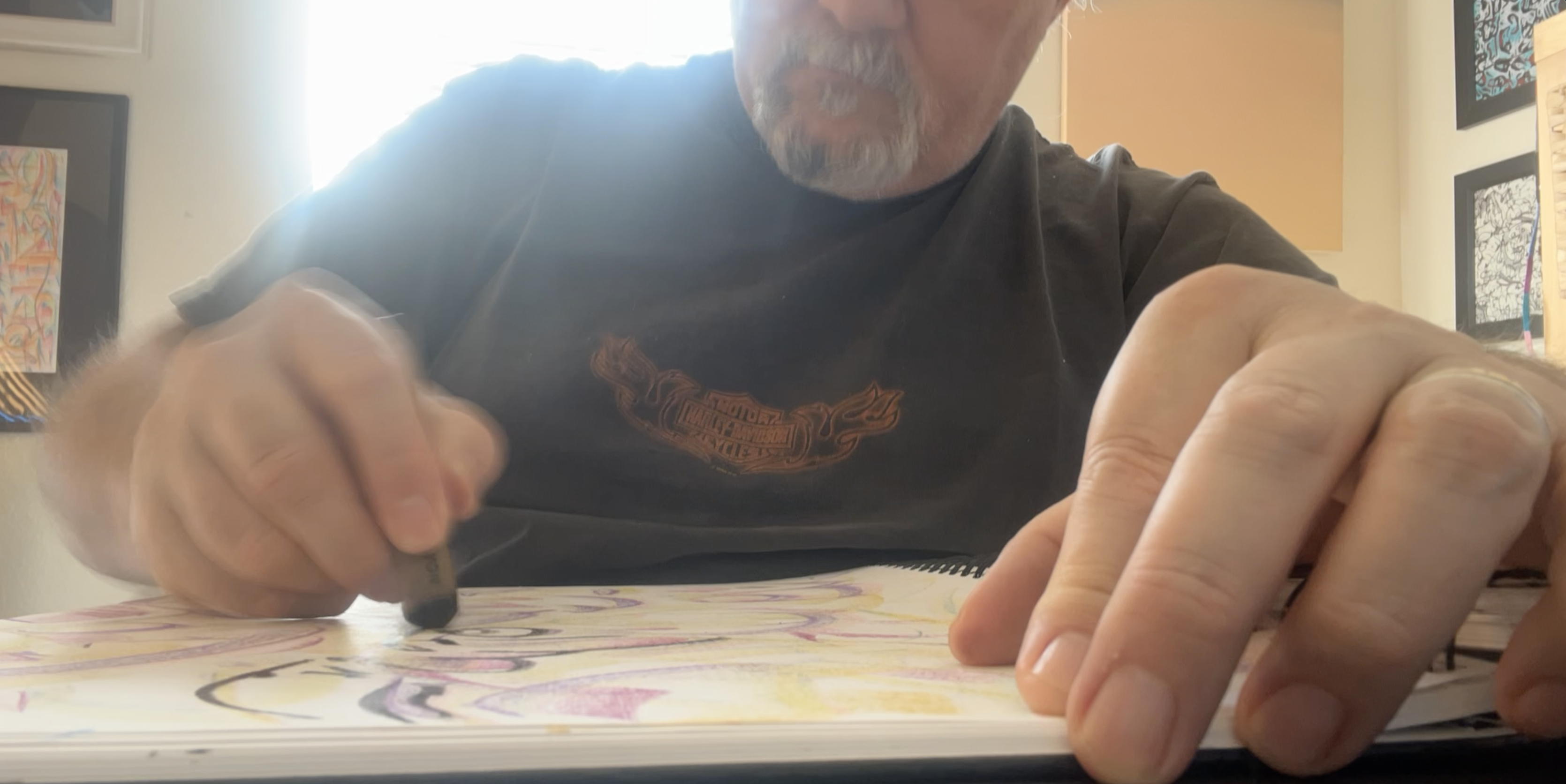
How the Crayonuary® 30-Day Challenge works
Every day, sit down and make a drawing with a crayon or several crayons. Any type and any color that tickles your fancy. Just draw. The only “rule” is that you can only use crayon. Your drawing can be as simple as a line or very complex. You decide. Your drawing can take two minutes or two hours, there are no time limits. Just go with whatever flow you are feeling in the moment. Your mission is to make a crayon drawing every day for the next 30 days.
After you’ve completed your crayon drawing and if you feel comfortable, we’d love for you to share your drawings on social media with the hashtag Crayonuary30 (#crayonuary30). You can also share your drawings with me by emailing them to me at twelvesquaredART@gmail.com. I can post your drawing for you or if you want to just keep them to yourself, that is okay too. We know you will get great benefits from the crayon drawing practice. The most important thing is that you do one drawing every day for thirty days.
A few things to consider…
Remember, only use crayons! Any crayons will do. Even those little packets you sometimes get from a restaurant. And any paper will do too. You don’t need any fancy art supplies to join in this challenge. Crayons and paper. That’s it!
If you’re feeling like, “heck yeah!, I want to join the Crayonuary® Challenge”, but the blank page is freaking you out. Linda and I have designed a Crayonuary journal just for you that will help you get your crayon mojo going. You can download a PDF version of the journal for $4.95 or you can order a printed version from Amazon.com for $14.99.
©2024 Ronald Gross
